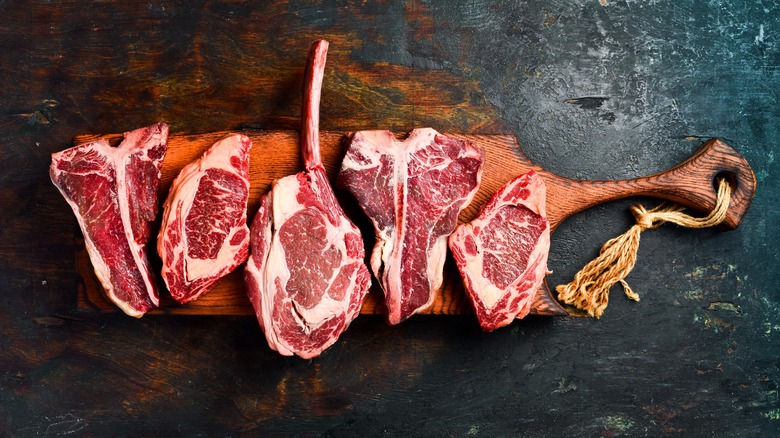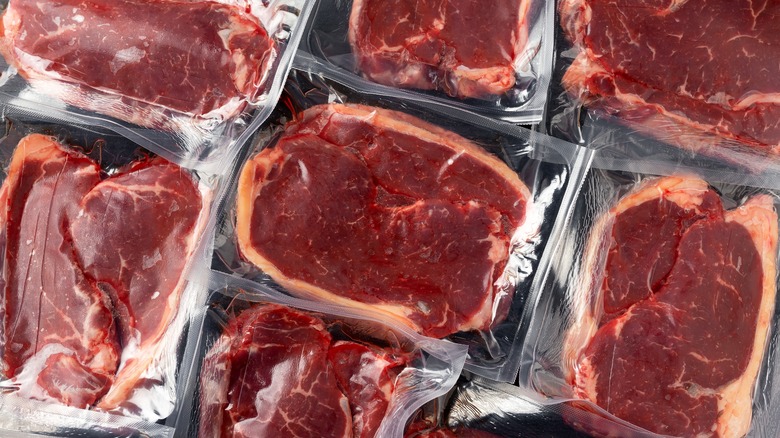How To Tell If Your Steak Has Gone Bad
When you drop plenty of money on groceries, it's only natural to want none of it to go to waste. This is especially true with steaks, which are rarely cheap in geneal. Knowing when a steak has gone bad, to the point that its flavor is compromised and/or it poses a health risk, can save both your recipe and your health.
Color is one of the earliest signs of spoilage in any red meat. If your steak is developing small, brown patches, it might be safe to eat, but its flavor will be slightly compromised. Once the whole steak has turned brown, it will at best taste bad, and at worst make you sick. Never purchase steak if it's already showing signs of discoloration.
If you're unsure, open the package and smell the steak. Raw meat has very little odor, so if you smell something pungent, throw it out. This is a sign that the muscle fibers have started to decay and there may be risk of bacterial growth. If you still aren't sure, touch the meat to test its firmness. A soft, finger-poked divot in a steak should bounce back right away. If the divot stays or seems very slow to return to its original shape, it's likely the meat has turned and it should be disposed of. To avoid these signs, it's important to know the same mistakes everyone makes with raw meat. Many of these rules are universal, but there are a few special steps you can take with steaks.
How to keep steak from spoiling
Your best bet in preventing your steaks from spoiling is to buy the freshest steaks you can and cook them as soon as possible. However, not everyone has the luxury of a fine butcher they can visit the day of their steak dinner. While all steaks have an expiration date, freezing them properly extends it significantly. If you don't have a vacuum sealer, wrap them in plastic wrap as soon as you can and seal them in a zip-top freezer bag. Prolonged freezing may compromise their flavor a touch, but it's usually safe to eat steaks no matter how long they've been frozen. Be sure to only thaw your meat in the fridge to reduce risk of bacterial exposure.
Speaking of vacuum sealers, they aren't limited to freezing meat. If you'll be waiting a few days before enjoying your steaks, feel free to seal them once you get home from the store and keep them in your refrigerator! This is a great opportunity to pre-season them, letting the flavors of whatever herbs and spices you choose really soak into the meat.
While long marinades yield great flavor, they have a time limit. The USDA recommends never marinating meat longer than 48 hours to keep it from getting mushy. However, marinades heavy in soy sauce and red wine slow the growth of bacteria, while also adding fantastic flavor. Know how long you should marinate your steak and make the marinade's flavor more intense with heavier seasoning.


